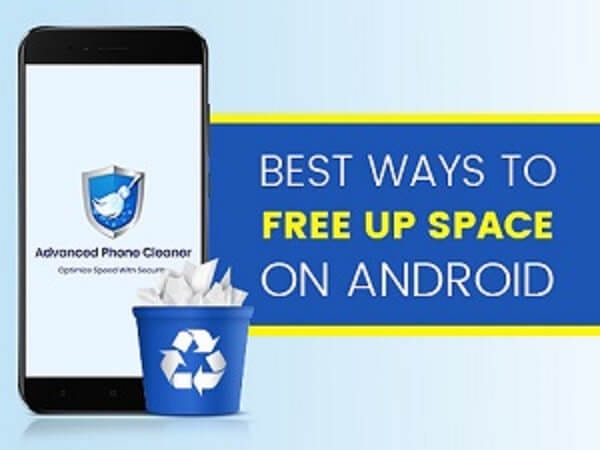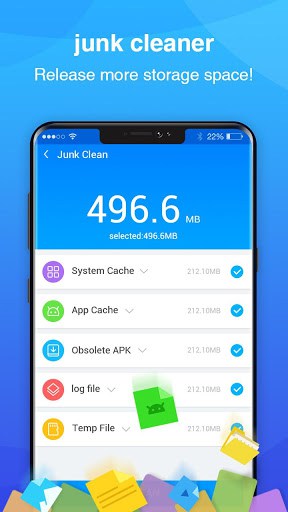Clean your iPhone immediately if it comes into contact with contaminants that might cause stains, such as ink, dyes, makeup, dirt, food, oils, and lotions. To clean your iPhone, unplug all cables and turn off your iPhone (press and hold the Sleep/Wake button, and then drag the onscreen slider). Use a soft, slightly damp, lint-free cloth.

Simple cleaning when you need it, or fully automated PC maintenance?
See which version of CCleaner suits you:
Best Korean Manufacturers, Suppliers in Online B2B Marketplace - GobizKOREA.com. Super Cleaner AMC Cleaner helps you clean all types of junk files (System caches, App caches, Residual junks, File Junks, Ad junks, Images, Audios &videos files, Big files,etc.) to free up more storage and memory, keep your phone clean and fast again! Super Fast Cleaner - Antivirus & Booster & Cleaner is a faster magic cleaner APP with junk and virus cleaning. Phone Cleaner can help you optimize your phone with junk files cleaner, antivirus, app.
CCleaner FreeOur standard version frees up space, clears your online tracks and helps you manage your machine so it runs faster. | CCleaner ProfessionalOur best-ever version combines all the features of Free with the power of automation, so your PC always stays clean, safe and fast. |
|---|---|
| Standard privacy protection | Standard privacy protection |
| Standard cleaning | Standard cleaning |
| not included:Complete PC Health Check | NEW Complete PC Health Check |
| not included:Software Updater | Updates apps to reduce security risks |
| not included:Complete cleaning | Complete cleaning |
| not included:Keeps your browsing history private | Keeps your browsing history private |
| not included:Detects and removes internet trackers | Detects and removes internet trackers |
| not included:Keeps you from running out of space | Keeps you from running out of space |
| not included:Priority customer support | Priority customer support |
| Download | Buy Now 24.95 € |
Date Issued: February 27, 2020
The U.S. Food and Drug Administration (FDA) wants to make consumers and health care providers aware that, to date, the FDA has not authorized for market any products using ozone gas or ultraviolet (UV) light to clean, disinfect, or sanitize continuous positive airway pressure (CPAP) devices and accessories (for example: hoses, masks, tubing and headgear).
CPAP machines are devices prescribed to patients with obstructive sleep apnea to keep their airways open during sleep. Most often, CPAP manufacturers recommend regular cleaning of CPAP device accessories with mild soap and water.
Important Recommendations for Consumers, Family Members and Caregivers:
- Follow the CPAP manufacturer's instructions and recommended cleaning and replacement guidelines for your CPAP machine and accessories. If you cannot find the owner's manual or instructions, or have questions, contact the CPAP device or accessory manufacturer. You also can contact your health care provider with any questions.
- Be aware that the FDA has not evaluated the safety and effectiveness of ozone gas or UV light products claiming to clean, sanitize or disinfect CPAP machines and accessories in the home or healthcare setting.
- Understand the potential risks from exposure to excessive amounts of ozone gas or UV light as described below include irritation to breathing passages (that is nose, throat, and lungs), particularly for those who have respiratory sensitivity such as asthma or allergies.
- Seek medical attention if you suspect you have experienced injuries or irritation from using products claiming to clean your CPAP machine or accessories.
Max Cleaner - Phone Cleaner & Antivirus

Potential Risks Associated with Using Ozone Gas or Ultraviolet (UV) Light Products that claim to Clean, Sanitize, or Disinfect CPAP Machines and Accessories:
Using Ozone Gas Products that claim to Clean CPAP Machine Equipment and Accessories
Ozone (O3), sometimes called 'activated oxygen', is a gas that can be used to kill harmful bacteria. However, for ozone to be effective in destroying harmful bacteria, it must be present at a concentration above levels considered safe for humans.
Although products that claim to use ozone gas to clean CPAP machine equipment are designed to keep the ozone generated inside the machine and its accessories, leaks can occur at tubing connections, filters or through fabric containers used to house CPAP accessories. When leaks occur, ozone gas in the nearby space may temporarily rise to unsafe levels, especially if the space is not well ventilated. Ozone gas concentrations within the CPAP machine and tubing can also remain above safe levels even after the recommended waiting periods for ozone gas products that claim to clean. If the CPAP accessories are used without first allowing fresh air to circulate through the entire CPAP machine to remove any remaining ozone gas, this could lead to nasal, lung or any other type of irritation to the user's breathing passages. Exposure to high levels of ozone gas also may worsen chronic respiratory diseases, such as asthma, or increase vulnerability to respiratory infection.
The FDA has received reports from patients experiencing cough, difficulty breathing, nasal irritation, headaches, asthma attacks and other breathing complaints when ozone gas-based products were used to clean, sanitize or disinfect CPAP devices and accessories.
Cell Phone Cleaner
Using UV Light Products that claim to Clean CPAP Machine Equipment and Accessories
UV light may be used to disinfect surfaces in a setting where UV light does not escape to the surroundings. If products generating UV light do not shield the user from exposure, they pose a potential health hazard depending on the wavelength, intensity, and exposure time.
Although FDA has not received any problem reports associated with using UV light products that claim to clean CPAP devices and accessories, unintentional or excessive exposure to UV light during cleaning may put a user at risk of eye injury, skin burns or even an increased risk of skin cancer. Additionally, when UV light is used with the purpose of disinfecting CPAP machine equipment and accessories, UV light may be unable to penetrate all areas of the CPAP accessories such as the hoses, masks and connectors. This may result in inadequately disinfected CPAP devices and accessories that may not be safe for reuse.
FDA Activities:
The FDA is working with manufacturers of products that claim to clean, sanitize or disinfect CPAP machines and accessories with either ozone gas or UV light to submit the recommended testing to support use of these devices as claimed.
Recently, the FDA conducted preliminary laboratory research on a few products claiming to use either ozone gas or UV light to clean, sanitize, or disinfect CPAP machines and accessories:
- For ozone gas products that claim to clean CPAP machines and accessories, tests performed in a minimally ventilated space with a volume representative of a small enclosed bathroom showed that several marketed ozone gas products generated ambient ozone levels above stated regulatory limits. Ozone levels were also elevated inside CPAP tubing even after recommended wait times in ozone gas products that do not perform an automatic clean air purge towards the end of the cleaning cycle.
- For UV light products that claim to clean, sanitize, or disinfect CPAP machines and accessories, tests showed the power of the UV light and the amount of time CPAP accessories were exposed to this light varied considerably among marketed UV cleaning products, based on the design of the product. If CPAP machines and accessories are exposed to insufficiently strong UV light, this could lead to inadequate disinfection and subsequent safety and performance issues.
The FDA will continue to monitor adverse events associated with the use of ozone gas or UV light products with claims to clean, sanitize, or disinfect CPAP machine and accessories. When new information becomes available, we will update this communication.
Additional Resources:
- Press Release: FDA Reminds Patients that Devices Claiming to Clean, Disinfect or Sanitize CPAP Machines Using Ozone Gas or UV Light Have Not Been FDA Authorized
- Consumer Update: Continuous Positive Airway Pressure (CPAP) Machine Cleaning
- Consumer Update Video: Watch This Before You Consider Using Ozone Gas or UV Light CPAP Cleaning Devices
- Ozone Overview – The National Institute for Occupational Safety and Health (NIOSH)
- Ozone Generators that are Sold as Air Cleaners – United States Environmental Protection Agency (EPA)
- UV Radiation – The Centers for Disease Control and Prevention (CDC)
Reporting Problems to the FDA:
Prompt reporting of an injury or problem can help the FDA identify and better understand the risk associated with products marketed to clean CPAP machines and accessories.

Simple cleaning when you need it, or fully automated PC maintenance?
See which version of CCleaner suits you:
Best Korean Manufacturers, Suppliers in Online B2B Marketplace - GobizKOREA.com. Super Cleaner AMC Cleaner helps you clean all types of junk files (System caches, App caches, Residual junks, File Junks, Ad junks, Images, Audios &videos files, Big files,etc.) to free up more storage and memory, keep your phone clean and fast again! Super Fast Cleaner - Antivirus & Booster & Cleaner is a faster magic cleaner APP with junk and virus cleaning. Phone Cleaner can help you optimize your phone with junk files cleaner, antivirus, app.
CCleaner FreeOur standard version frees up space, clears your online tracks and helps you manage your machine so it runs faster. | CCleaner ProfessionalOur best-ever version combines all the features of Free with the power of automation, so your PC always stays clean, safe and fast. |
|---|---|
| Standard privacy protection | Standard privacy protection |
| Standard cleaning | Standard cleaning |
| not included:Complete PC Health Check | NEW Complete PC Health Check |
| not included:Software Updater | Updates apps to reduce security risks |
| not included:Complete cleaning | Complete cleaning |
| not included:Keeps your browsing history private | Keeps your browsing history private |
| not included:Detects and removes internet trackers | Detects and removes internet trackers |
| not included:Keeps you from running out of space | Keeps you from running out of space |
| not included:Priority customer support | Priority customer support |
| Download | Buy Now 24.95 € |
Date Issued: February 27, 2020
The U.S. Food and Drug Administration (FDA) wants to make consumers and health care providers aware that, to date, the FDA has not authorized for market any products using ozone gas or ultraviolet (UV) light to clean, disinfect, or sanitize continuous positive airway pressure (CPAP) devices and accessories (for example: hoses, masks, tubing and headgear).
CPAP machines are devices prescribed to patients with obstructive sleep apnea to keep their airways open during sleep. Most often, CPAP manufacturers recommend regular cleaning of CPAP device accessories with mild soap and water.
Important Recommendations for Consumers, Family Members and Caregivers:
- Follow the CPAP manufacturer's instructions and recommended cleaning and replacement guidelines for your CPAP machine and accessories. If you cannot find the owner's manual or instructions, or have questions, contact the CPAP device or accessory manufacturer. You also can contact your health care provider with any questions.
- Be aware that the FDA has not evaluated the safety and effectiveness of ozone gas or UV light products claiming to clean, sanitize or disinfect CPAP machines and accessories in the home or healthcare setting.
- Understand the potential risks from exposure to excessive amounts of ozone gas or UV light as described below include irritation to breathing passages (that is nose, throat, and lungs), particularly for those who have respiratory sensitivity such as asthma or allergies.
- Seek medical attention if you suspect you have experienced injuries or irritation from using products claiming to clean your CPAP machine or accessories.
Max Cleaner - Phone Cleaner & Antivirus
Potential Risks Associated with Using Ozone Gas or Ultraviolet (UV) Light Products that claim to Clean, Sanitize, or Disinfect CPAP Machines and Accessories:
Using Ozone Gas Products that claim to Clean CPAP Machine Equipment and Accessories
Ozone (O3), sometimes called 'activated oxygen', is a gas that can be used to kill harmful bacteria. However, for ozone to be effective in destroying harmful bacteria, it must be present at a concentration above levels considered safe for humans.
Although products that claim to use ozone gas to clean CPAP machine equipment are designed to keep the ozone generated inside the machine and its accessories, leaks can occur at tubing connections, filters or through fabric containers used to house CPAP accessories. When leaks occur, ozone gas in the nearby space may temporarily rise to unsafe levels, especially if the space is not well ventilated. Ozone gas concentrations within the CPAP machine and tubing can also remain above safe levels even after the recommended waiting periods for ozone gas products that claim to clean. If the CPAP accessories are used without first allowing fresh air to circulate through the entire CPAP machine to remove any remaining ozone gas, this could lead to nasal, lung or any other type of irritation to the user's breathing passages. Exposure to high levels of ozone gas also may worsen chronic respiratory diseases, such as asthma, or increase vulnerability to respiratory infection.
The FDA has received reports from patients experiencing cough, difficulty breathing, nasal irritation, headaches, asthma attacks and other breathing complaints when ozone gas-based products were used to clean, sanitize or disinfect CPAP devices and accessories.
Cell Phone Cleaner
Using UV Light Products that claim to Clean CPAP Machine Equipment and Accessories
UV light may be used to disinfect surfaces in a setting where UV light does not escape to the surroundings. If products generating UV light do not shield the user from exposure, they pose a potential health hazard depending on the wavelength, intensity, and exposure time.
Although FDA has not received any problem reports associated with using UV light products that claim to clean CPAP devices and accessories, unintentional or excessive exposure to UV light during cleaning may put a user at risk of eye injury, skin burns or even an increased risk of skin cancer. Additionally, when UV light is used with the purpose of disinfecting CPAP machine equipment and accessories, UV light may be unable to penetrate all areas of the CPAP accessories such as the hoses, masks and connectors. This may result in inadequately disinfected CPAP devices and accessories that may not be safe for reuse.
FDA Activities:
The FDA is working with manufacturers of products that claim to clean, sanitize or disinfect CPAP machines and accessories with either ozone gas or UV light to submit the recommended testing to support use of these devices as claimed.
Recently, the FDA conducted preliminary laboratory research on a few products claiming to use either ozone gas or UV light to clean, sanitize, or disinfect CPAP machines and accessories:
- For ozone gas products that claim to clean CPAP machines and accessories, tests performed in a minimally ventilated space with a volume representative of a small enclosed bathroom showed that several marketed ozone gas products generated ambient ozone levels above stated regulatory limits. Ozone levels were also elevated inside CPAP tubing even after recommended wait times in ozone gas products that do not perform an automatic clean air purge towards the end of the cleaning cycle.
- For UV light products that claim to clean, sanitize, or disinfect CPAP machines and accessories, tests showed the power of the UV light and the amount of time CPAP accessories were exposed to this light varied considerably among marketed UV cleaning products, based on the design of the product. If CPAP machines and accessories are exposed to insufficiently strong UV light, this could lead to inadequate disinfection and subsequent safety and performance issues.
The FDA will continue to monitor adverse events associated with the use of ozone gas or UV light products with claims to clean, sanitize, or disinfect CPAP machine and accessories. When new information becomes available, we will update this communication.
Additional Resources:
- Press Release: FDA Reminds Patients that Devices Claiming to Clean, Disinfect or Sanitize CPAP Machines Using Ozone Gas or UV Light Have Not Been FDA Authorized
- Consumer Update: Continuous Positive Airway Pressure (CPAP) Machine Cleaning
- Consumer Update Video: Watch This Before You Consider Using Ozone Gas or UV Light CPAP Cleaning Devices
- Ozone Overview – The National Institute for Occupational Safety and Health (NIOSH)
- Ozone Generators that are Sold as Air Cleaners – United States Environmental Protection Agency (EPA)
- UV Radiation – The Centers for Disease Control and Prevention (CDC)
Reporting Problems to the FDA:
Prompt reporting of an injury or problem can help the FDA identify and better understand the risk associated with products marketed to clean CPAP machines and accessories.
If you experience respiratory difficulty or other symptoms after using any UV light or ozone gas products to clean, disinfect or sanitize CPAP machines or accessories, please use the MedWatch Voluntary Reporting Form to report the problem.
If you are a health care provider employed by facilities subject to the FDA's user facility reporting requirements, follow the reporting procedures established by your facilities.
Please include the following information in your reports, if available:
- CPAP machine manufacturer and model
- Name of the product used to clean your CPAP machine and/or accessories
- How often the product is used
- Place of purchase
- Details of the adverse event, such as symptoms, duration, onset
Contact Information:
If you have questions about this communication, please email the FDA's Division of Industry and Consumer Education (DICE) at DICE@FDA.HHS.GOV or call 800-638-2041 or 301-796-7100.

